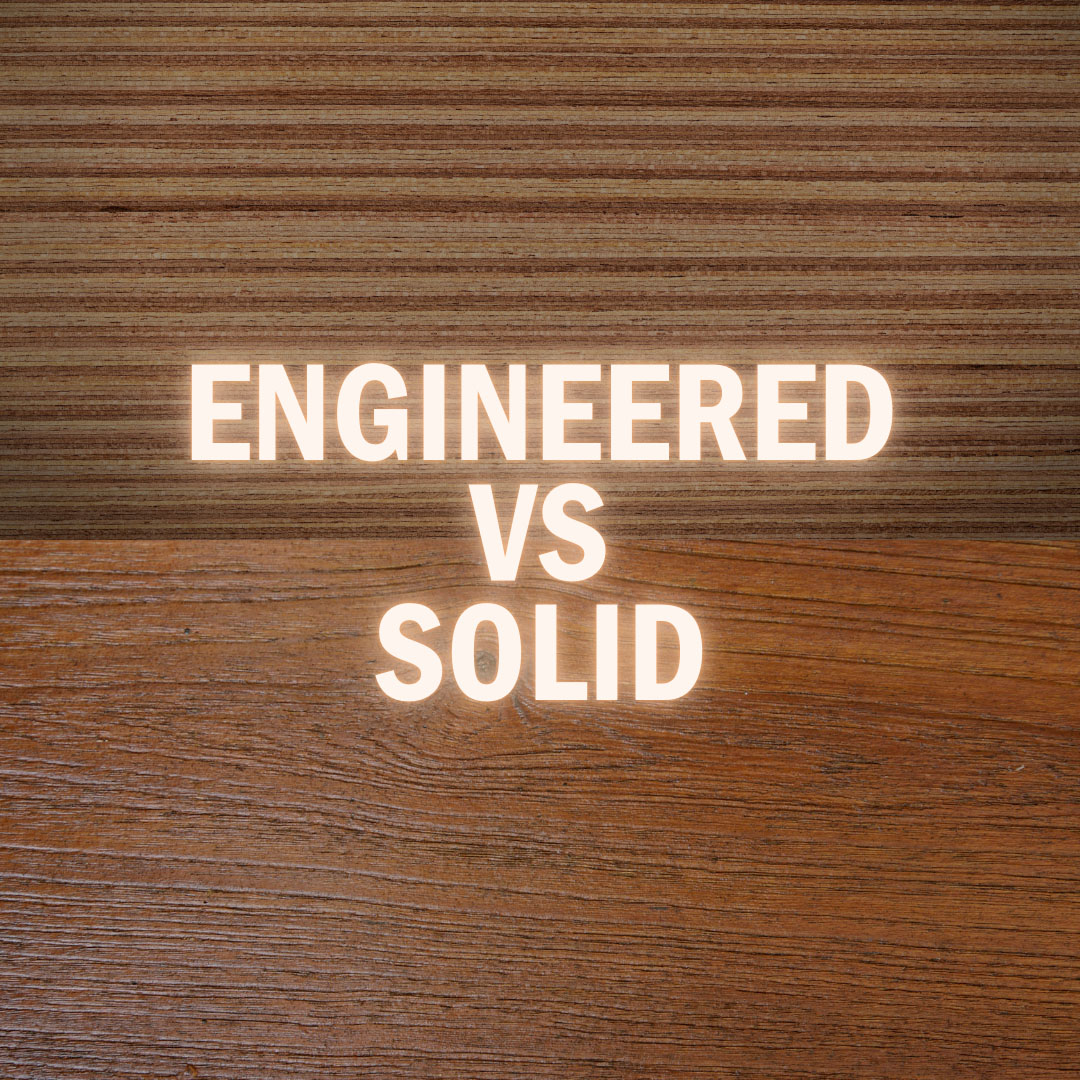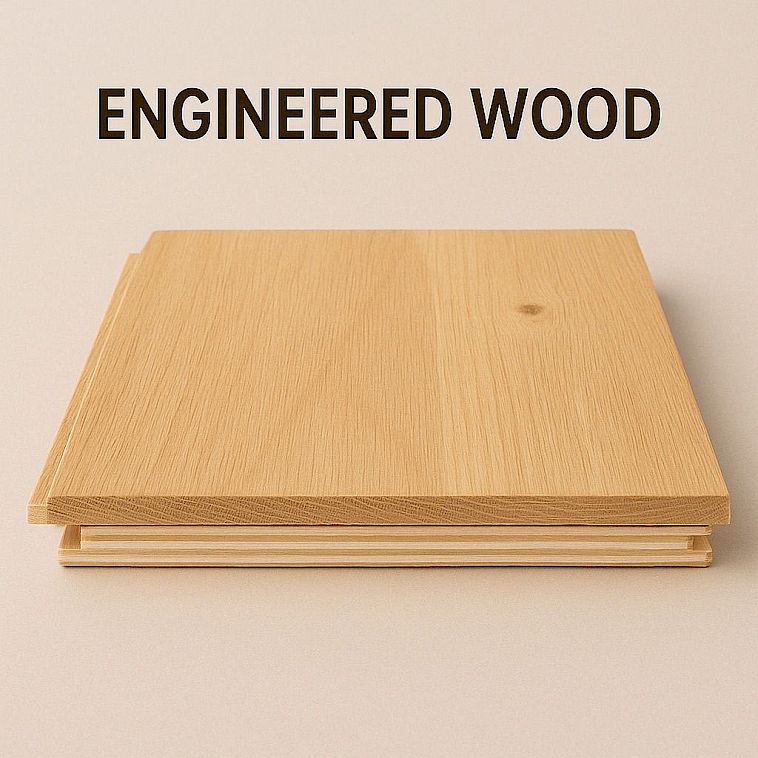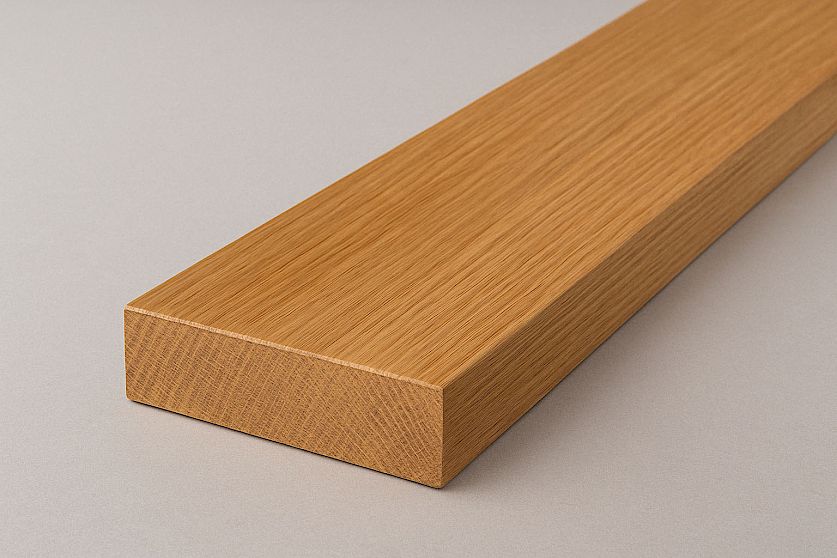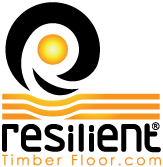
Engineered Wood Flooring vs Solid Wood Flooring: What You Need to Know
Thinking of upgrading your floors? Whether you're renovating your home or choosing flooring for a new space, one question often comes up
"Should I go for engineered wood or solid wood flooring?"
Both offer the timeless beauty of wood, but the right choice depends on your lifestyle, budget, and design preferences.
In this comprehensive guide, we’ll break down the differences, pros, cons, and key features of each flooring type so you can make a confident, informed decision.
Introduction to Flooring Types
Overview of Options
When it comes to choosing the perfect flooring for your home or commercial space, the options can be overwhelming. Two of the most popular types of flooring are solid wood flooring and engineered wood flooring. Both options offer a unique set of benefits and drawbacks, making it essential to understand the differences between them.
Solid wood flooring is made from a single piece of wood, while engineered wood flooring is made from multiple layers of wood.
In this section, we will delve into the world of flooring types, exploring the various options available, including solid wood floors, engineered wood floors, and hardwood flooring.
What’s the Difference Between Engineered and Solid Wood Flooring?
At first glance, both may look remarkably similar — sleek wood grains, luxurious finishes, and that unmistakable warmth underfoot.
But beneath the surface, they’re fundamentally different in construction, behavior, and longevity.
- Solid Wood Flooring is made from a single, solid piece of hardwood. Each plank is typically 3/4 inch thick and can be sanded and refinished multiple times over its lifetime. A solid hardwood floor is a premium flooring option valued for its longevity and variety, but it should not be laid against concrete slabs or in wet areas due to potential damage from humidity.
- Engineered Wood Flooring consists of a thin veneer of real hardwood bonded over multiple layers of plywood or high-density fiberboard (HDF), offering stability and resistance to moisture. The HDF core provides structural integrity and enhances the floor's sustainability and longevity
The difference in construction gives each option unique strengths and limitations, making them suitable for different rooms, climates, and renovation needs.

Understanding Engineered Wood
What is Engineered Wood?
Engineered wood flooring is a type of flooring that consists of a thin layer of hardwood bonded to a core of high-quality plywood or high-density fiberboard (HDF).
This construction provides engineered wood flooring with improved stability and resistance to moisture, making it an ideal choice for areas with high humidity or temperature fluctuations.
Unlike solid wood flooring, engineered wood flooring is less prone to warping, cupping, and shrinkage, ensuring a more durable and long-lasting floor.
Engineered wood flooring is available in a range of wood species, including oak, maple, and cherry, and can be installed using various methods, such as floating, gluing, or nailing.
Engineered Wood Flooring: Smart, Stylish & Stable
Engineered wood flooring has surged in popularity thanks to its smart construction and affordability. It also offers easier installation compared to solid hardwood flooring, making it a more appealing option for many consumers.
It offers the look and feel of hardwood while addressing common challenges like moisture sensitivity and installation complexity. There are many advantages to choosing engineered wood flooring, including superior stability, cost-effectiveness, quicker installation, and a wider variety of options.
Additionally, engineered wood flooring is available in wider planks, which not only enhance the room's aesthetic appeal and perceived space but also offer superior stability.
✅ Moisture-Resistant
The layered core resists warping from humidity and temperature changes. It’s an ideal choice for areas prone to moisture, like bathrooms and kitchens. Additionally, engineered wood flooring is suitable for installation over a concrete subfloor, providing stability and resistance to moisture and temperature fluctuations.
✅ Stable Structure
Engineered floors are more stable than solid wood, especially in tropical climates or rooms with underfloor heating. Additionally, engineered wood flooring is compatible with an underfloor heating system, making it a better choice for installations where such heating is used.
✅ Budget-Friendly Beauty
You get the aesthetic of hardwood at a lower price point. Plus, installation costs can be cheaper. Engineered wood flooring offers easy installation, thanks to its uniformity, which allows for a simpler, fuss-free process that often doesn't require complex tools or materials.
✅ DIY-Friendly Installation
Engineered flooring supports multiple installation methods, including click-lock floating systems, glue-down, and even nail-down options. While the floating method is DIY-friendly, it has disadvantages such as not being re-sandable and potentially producing a hollow sound underfoot. This makes it appealing for homeowners looking to save on professional fees.
✅ Design Freedom
Choose from an array of species — oak, walnut, maple — and finishes like distressed, wire-brushed, or smooth. Additionally, explore a variety of colour options, including grey or white wood flooring, to complement various interior styles and enhance the aesthetic appeal of your space.
✅ Eco-Friendly Options
Many engineered wood products use sustainable materials in their core, reducing overall deforestation. Additionally, high-quality engineered wood flooring often contains low volatile organic compounds (VOCs), which helps improve indoor air quality by minimizing harmful chemicals.
Limitations:
- Veneer thickness limits how many times it can be sanded.
- Lower-end products may feel less authentic underfoot compared to solid hardwood.

Solid Wood Flooring: The Gold Standard of Luxury
If timeless appeal and longevity are your top priorities, solid hardwood flooring is unmatched. It’s a premium option that brings natural beauty, character, and value to any space. Solid timber flooring is often considered a premium choice due to its durability and aesthetic appeal. Solid wood planks are commonly used in solid wood flooring, though they can be less stable and shorter than engineered options.
Additionally, solid wood flooring offers better acoustic properties, as its density helps absorb reverberation and its hardness aids in sound distribution within a room.
✅ Unmatched Longevity
Solid hardwood can be a lifelong investment. With proper care, it can last a century or more.
✅ Refinish Multiple Times
Change your decor? Sand it down and restain. This makes it great for long-term homeowners who want flexibility.
✅ Natural Beauty & Grain
No two planks are the same. The grain patterns, knots, and color variations make each floor unique.
✅ Superior Acoustics
Solid hardwood floors provide better sound insulation than engineered alternatives, especially beneficial for multi-level homes. Their superior acoustic properties, due to their density and hardness, help absorb reverberation and aid in sound distribution within a room.
Limitations:
- Sensitive to Moisture: Can expand or contract based on humidity.
- Professional Installation Recommended: Due to expansion gaps and finishing.
- Higher Cost: Premium material with premium installation and maintenance costs.
- Concrete Slabs: Installing solid hardwood flooring over concrete slabs can lead to humidity migration from the concrete, causing the hardwood to swell and warp.
Design & Style Comparison: More Than Just Looks
Both engineered and solid hardwood come in gorgeous styles — from rustic to ultra-modern.
- Choose from species like oak, maple, and walnut. Solid hardwood flooring is available in a variety of wood types, offering numerous options to match your aesthetic preferences.
- Match your interior with stains ranging from light white oak to rich espresso.
- Go classic with tongue-and-groove, or make a statement with herringbone or chevron patterns. Solid wood flooring planks are available in various lengths, providing flexibility in design and installation.
✨ Tip: Engineered wood is available in extra-wide planks, offering a modern, spacious feel.
Aesthetics and Durability
Engineered vs Solid Wood
When it comes to aesthetics and durability, both engineered wood flooring and solid wood flooring have their advantages. Solid wood flooring offers a traditional, authentic look and feel, with a unique character that develops over time.
Engineered wood flooring, on the other hand, provides a similar look and feel to solid wood flooring but with improved stability and resistance to moisture.
In terms of durability, solid wood flooring can be sanded and refinished multiple times, while engineered wood flooring has a limited number of refinishing options due to its thinner wear layer. However, engineered wood flooring is more resistant to scratches and dents, making it a popular choice for high-traffic areas.
Ultimately, the choice between engineered wood flooring and solid wood flooring depends on personal preference, budget, and lifestyle. With proper maintenance and care, both types of flooring can provide a beautiful and durable surface for years to come, making them a great option for those looking for a cost-effective and environmentally friendly flooring solution.
Installation: Which One’s Easier?
One of the biggest factors in flooring choice is installation. Installing engineered wood flooring is generally easier and more DIY-friendly, often allowing for floating methods or simple gluing. Additionally, pre-finished engineered wood flooring comes with additional finishes that save time and effort compared to solid wood, which typically requires finishing after installation.
Engineered Wood:
- Floating Floor: Easy click-lock systems allow fast, clean installation.
- Glue-Down or Nail-Down: Can also be installed traditionally.
- Subfloor Versatility: Works over concrete, plywood, or even existing flooring.
- Time-Saving: Perfect for DIYers or fast renovations.
Solid Wood:
- Requires Acclimatization: Must sit in your home environment for days before installation.
- Nail-Down Installation: Best done by professionals.
- Blind Nailed Installation: Solid hardwood flooring is installed using a tongue-and-groove system, where each board is blind-nailed to the subfloor through the edges. This method requires specialized tools, making it less accessible for DIYers.
- On-Site Sanding & Finishing: Can be time-consuming and messy.
In short, if you want convenience and speed, engineered wood wins. If you’re willing to invest in craftsmanship, solid wood rewards you in the long run.
Which Wood Flooring Should You Choose?
Let’s break it down based on your needs:
| Feature | Engineered Wood Flooring | Solid Wood Flooring |
|---|---|---|
| Durability | 20–30 years | 50–100+ years |
| Moisture Resistance | High | Low |
| Price | More affordable | Premium |
| Installation | DIY-friendly | Pro recommended |
| Refinishing | 1–3 times (thin veneer) | Many times |
| Underfloor Heating | Compatible | Not recommended |
| Material Use | Thin layer of hardwood over plywood or HDF core | Utilizes more of the tree per plank |
Solid hardwoods utilize more of the tree per plank compared to engineered hardwood, which involves a thin layer of hardwood over a plywood or HDF core. This distinction has environmental implications, as engineered flooring includes the use of adhesives and less sustainable practices in contrast to the natural properties of solid hardwoods.
Which One Should You Choose?
Let’s break it down based on your specific needs:
Choose Engineered Wood Flooring If You:
- Want a cost-effective flooring solution
- Plan to install floors yourself
- Need a solution for high-moisture rooms
- Prefer quick renovation with modern design choices
- Have underfloor heating in your home
- Are looking for a versatile flooring material that is eco-friendly and easy to install
- Need a suitable option for various flooring projects, from renovations to new constructions
Choose Solid Wood Flooring If You:
- Are looking for a long-term investment
- Want the option to refinish and restain repeatedly
- Prioritize sound insulation and authenticity
- Live in a stable climate or can control humidity
- Want to increase the resale value of your home

Final Verdict: Engineered vs Solid Wood
There’s no one-size-fits-all answer. Your best choice depends on what you value most: affordability, ease of installation, and moisture resistance (engineered wood), or unmatched longevity, luxury, and heritage charm (solid wood). Traditional solid wood flooring offers timeless beauty and can be refinished multiple times, adding to its long-term value.
Engineered hardwood flooring, on the other hand, provides enhanced durability against temperature fluctuations and humidity, making it a practical choice for homeowners. It also boasts a longer lifespan, water resistance, and easier installation compared to solid hardwood.
Either way, you’re investing in beauty, quality, and value that only real wood flooring can deliver.

Need Expert Advice for Your Space?
Choosing the right flooring isn’t just about materials — it’s about lifestyle, space, and future plans.
Let our flooring specialists guide you through the options. Whether you’re upgrading a single room or redoing your whole house, we’ll help you find the perfect wood flooring to match your vision and budget.
???? Book a free consultation today
???? Solid wood collections here
Your dream floor is just one click away.